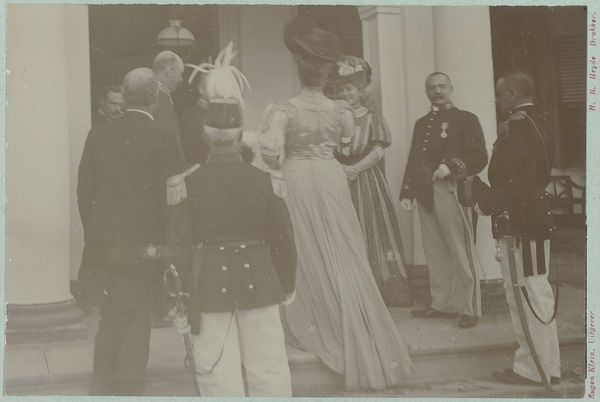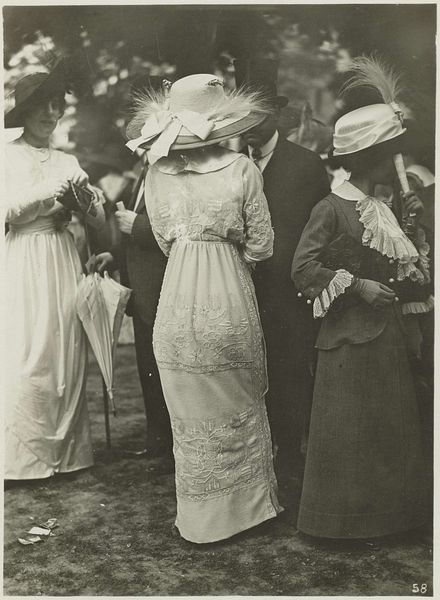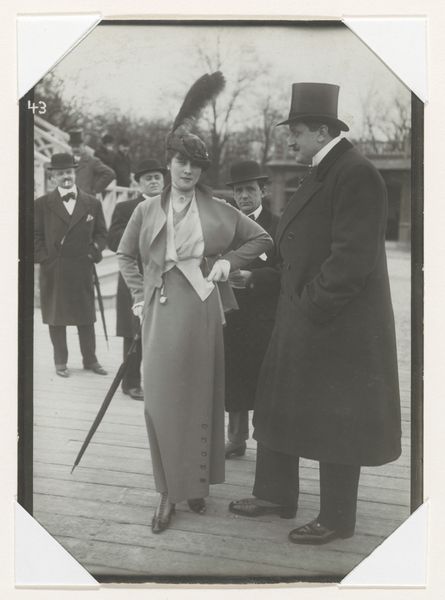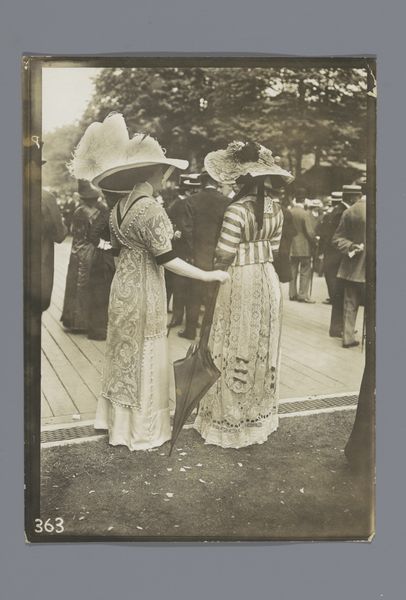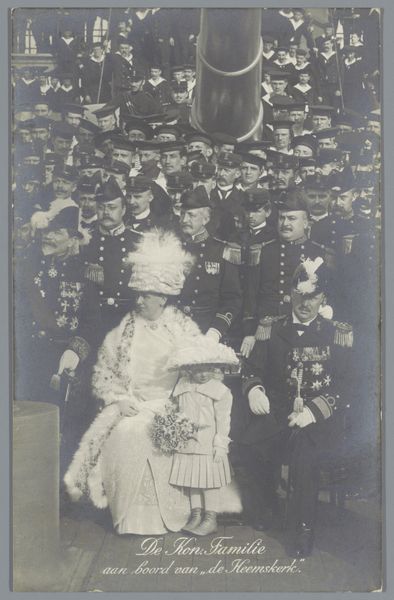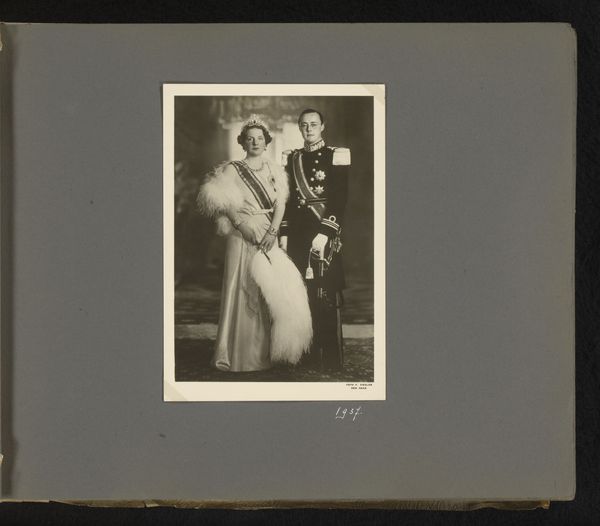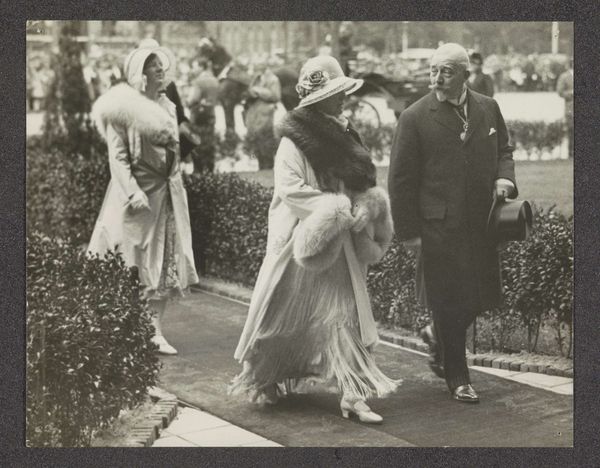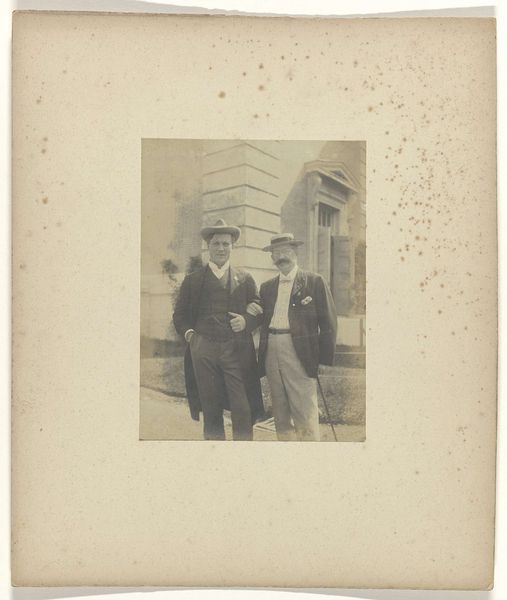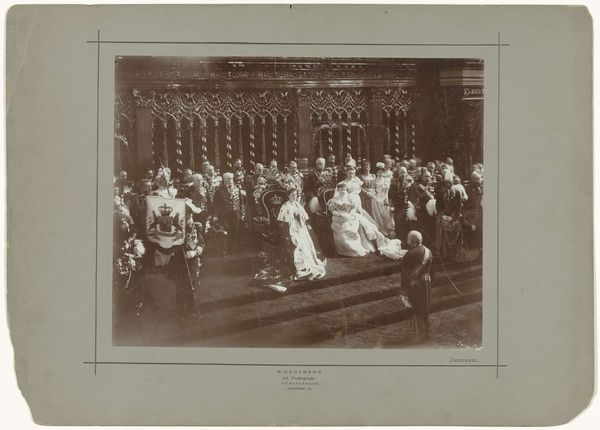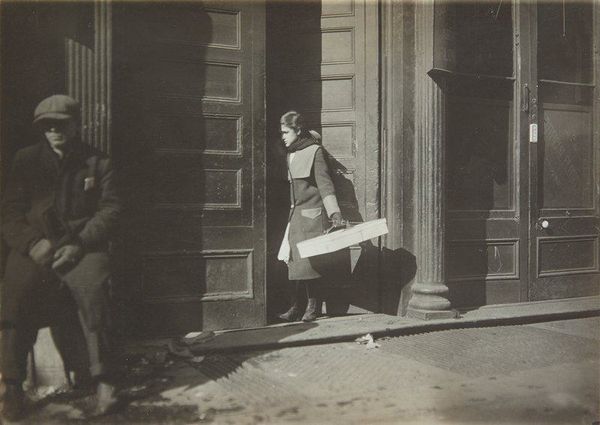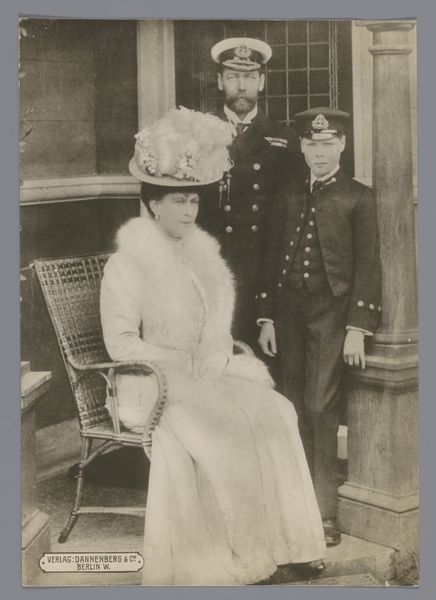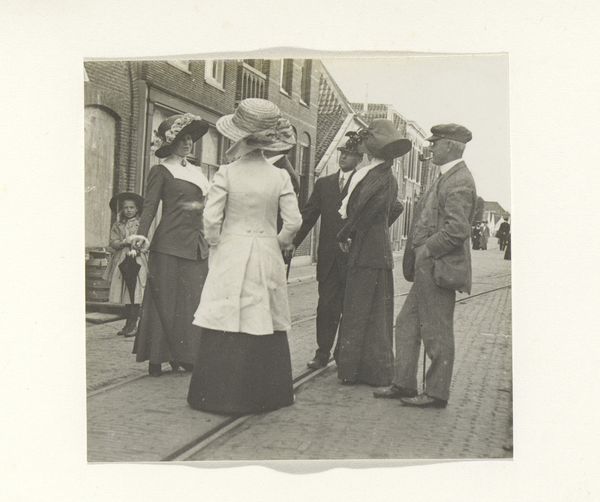
Twee dames bij de Hippodrome de Longchamp tijdens paardenraces in het Bois de Boulogne Possibly 1912 - 1916
0:00
0:00
gelatin-silver-print, print, photography, gelatin-silver-print
#
portrait
#
print photography
#
gelatin-silver-print
# print
#
photography
#
group-portraits
#
gelatin-silver-print
Dimensions: height 218 mm, width 140 mm
Copyright: Rijks Museum: Open Domain
Editor: This is "Twee dames bij de Hippodrome de Longchamp tijdens paardenraces in het Bois de Boulogne" by Frères Séeberger, a gelatin silver print from around 1912-1916. It's striking how much the focus is on the fashion itself. What’s your take on this photograph? Curator: The photographic process itself becomes incredibly relevant here. We see the mass-produced nature of fashion imagery emerging, moving away from unique artistic renderings towards readily disseminated visual information, documenting clothes that would, in turn, be mass manufactured, consumed, and discarded. Notice the almost scientific detachment. How does this photograph operate as a commodity in itself? Editor: So, it’s not just about capturing a scene, but about promoting and circulating fashion as a product? The way the light hits the fabrics is quite detailed; it feels deliberate. Curator: Exactly! Consider the labour involved in producing these garments, the photographic print itself, and the social structures that enable and perpetuate this cycle of production and consumption. These women become objects of the system, and their representation reinforces social stratification and class aspirations through this printed commodity. What aspects of class are communicated through these details, specifically in the context of this burgeoning fashion industry? Editor: I hadn’t considered the actual labor behind the clothes. Seeing it as part of a production chain, from creation to consumption, definitely changes how I see the image. Curator: By focusing on the materials, the processes, and the implied labour, we unveil layers of meaning embedded within this seemingly simple snapshot of fashionable women. The act of photographing them is just another stage in the manufacturing and sale of status. Editor: It’s almost like the photograph isn't just reflecting society, but actively constructing it. This lens is so different from the formalist readings I’m used to! Curator: Indeed! Considering art’s material presence brings new insights, challenging traditional art historical perspectives by emphasizing production over purely aesthetic appreciation. Editor: Thanks. I’ll definitely be thinking about this picture and others with this production-consumption perspective.
Comments
No comments
Be the first to comment and join the conversation on the ultimate creative platform.

